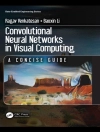Electromagnetic Waves 1 examines Maxwell’s equations and wave propagation. It presents the scientific bases necessary for any application using electromagnetic fields, and analyzes Maxwell’s equations, their meaning and their resolution for various situations and material environments.
These equations are essential for understanding electromagnetism and its derived fields, such as radioelectricity, photonics, geolocation, measurement, telecommunications, medical imaging and radio astronomy.
This book also deals with the propagation of electromagnetic, radio and optical waves, and analyzes the complex factors that must be taken into account in order to understand the problems of propagation in a free and confined space. Electromagnetic Waves 1 is a collaborative work, completed only with the invaluable contributions of Ibrahima Sakho, Hervé Sizun and Jean Pierre Blot, not to mention the editor, Pierre-Noël Favennec. Aimed at students and engineers, this book provides essential theoretical support for the design and deployment of wireless radio and optical communication systems.
Table des matières
Preface ix
Chapter 1. Maxwell’s Equations 1
Ibrahima SAKHO
1.1. Maxwell’s equations in a vacuum 1
1.1.1. Electrostatics 1
1.1.2. Magnetostatics 17
1.1.3. Electromagnetic induction 33
1.1.4. Maxwell’s equations 54
1.2. Maxwell equations in material media 85
1.2.1. Electric field and potential in macroscopic dielectric media 86
1.2.2. Homogeneous linear dielectric media 95
1.2.3. Magnetic media 98
1.2.4. Maxwell equations in a polarized and magnetic medium 111
1.3. References 117
Chapter 2. The Propagation of Optical and Radio Electromagnetic Waves 119
Hervé SIZUN
2.1. Introduction 119
2.2. Maxwell’s equations 121
2.2.1. Maxwell-Gauss equation 121
2.2.2. Maxwell-Thompson equation 122
2.2.3. Maxwell-Faraday equation 123
2.2.4. Maxwell-Ampère equation 123
2.3. Solving Maxwell’s equations 124
2.4. Characteristics of electromagnetic waves 125
2.4.1. Propagation speed 125
2.4.2. Wavelength and/or frequency 126
2.4.3. The characteristic impedance of the propagation medium 127
2.4.4. Poynting vector 127
2.4.5. The refractive index 128
2.4.6. Polarization 129
2.4.7. Transpolarization 131
2.4.8. Different propagation paths 132
2.4.9. Fresnel zones 133
2.4.10. Fundamental properties of the propagation channel 134
2.5. Propagation modeling 146
2.5.1. Tropospheric propagation 147
2.5.2. Propagation in rural, suburban and urban areas 172
2.5.3. Propagation within buildings 184
2.5.4. Broadband propagation 196
2.5.5. Ultra-wideband propagation 200
2.6. The propagation of visible and infrared waves in the Earth’s atmosphere 207
2.6.1. Introduction 207
2.6.2. The propagation of light in the atmosphere 208
2.6.3. The different models 214
2.6.4. Experimental results 222
2.6.5. Fog and mist 225
2.6.6. Sandstorms 226
2.6.7. Meteorological optical range 227
2.6.8. Applications 231
2.7. Conclusion 232
2.8. Recommendations ITU-R 233
2.9. References 233
Appendix 1 239
Appendix 2 243
Appendix 3 261
Appendix 4 269
Appendix 5 273
List of Acronyms and Constants 275
List of Authors 277
Index 279
A propos de l’auteur
Pierre-Noel Favennec is a Doctor of Science, former researcher at France
Telecom and former consultant at the Institut Telecom. He is now the
Chairman of Armor Science.












